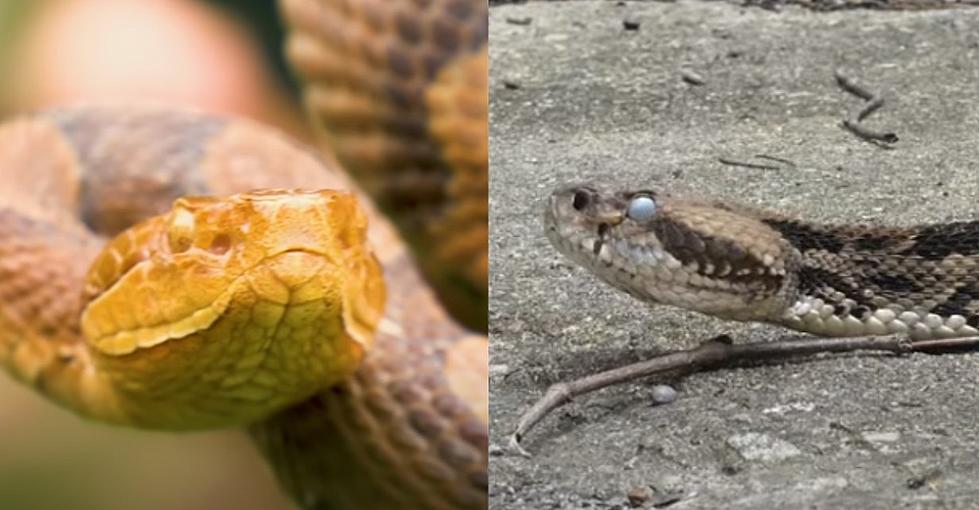
Did You Know Connecticut Has Two Venomous Snake Species? Here’s What to Know
The weather is heating up and warmer temperatures mean more humans outside.

The more humans are out doing dumb things, the more we're likely to encounter, and get bit by snakes. If you do happen to get bit, don't get bit by either of CT's two venomous snakes. Here is what you need to know.
The Copperhead
Let's start with the good news, according to A-Z Animals, the Copperhead snake "is far too small to eat a person and only bites as a last resort." Now, the bad news, It is venomous, it is most active in the spring and it looks like the devil thanks to it's elliptical eyes.
For more on the Copperhead, I reached out to an expert that assists me with wildlife topics. Her name is Jen "The Zookeeper" Kotkin. This is what Jen told me about the Copperhead population in CT:
Timber Rattlesnake
The Timber Rattlesnake is venomous but an extremely rare sight. In fact, they are protected by the Endangered Species Act according to A-Z Animals.
Here is what Jen "The Zookeeper" Kotkin shared about the Timber Rattlesnake:
I say: "Panic, be afraid!"
Wildlife Correspondent Jen Kotkin:
Jen has been immersed in the conservation & science education field for over 30 years. While working as Director of Animal Care for The New Canaan Nature Center in Connecticut, she was responsible for the care of native wildlife and birds of prey, while teaching the public about the roles of these wild neighbors. While with the Bronx Zoo and Los Angeles Zoo, Jen’s main priority was the care of exotic hoofstock, again while teaching the public about the delicate balance of humans & habitats.
While working with a wildlife sanctuary in Half Moon Bay, CA, Jen played a major role in the wildlife training and handling of some 50 exotic species. Her major focus was creating curriculum for a variety of programs including at-risk and foster youth programming. These programs encompassed helping fragile children gain a sense of trust and worth while developing a healing relationship with the non releasable wildlife at the sanctuary.
Currently, Jen is the owner and sole proprietor of Jen Kotkin Pet Care, providing pet care as well as mental and physical exercise & stimulation for dogs, cats, horses, birds and more!
Jen continues to create a variety of programs catered to the needs of many organizations. Her passion for teaching about the natural world to those around her is important, and hopes to ignite this spark for others, just as it did for her!
Want more CT News? Check out the Ethan, Lou & Large Dave Podcast on Apple and Spotify.
My Brother's Keeper: The Tale of a CT Cult Leader Who Said He Was God
5 Fun Connecticut Facts That Almost No One Will Care About
More From WRKI and WINE









